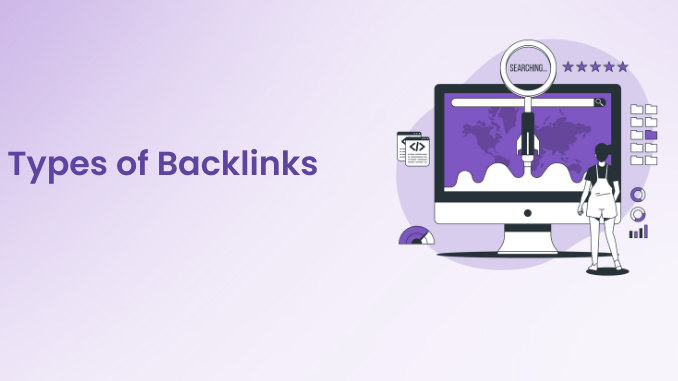
In digital marketing and search engine optimization (SEO), backlinks play a crucial role in determining a website’s authority and ranking.
Backlinks, also known as inbound or incoming links, are links from one website to another. Search engines, especially Google, consider backlinks to be votes of confidence.
The more quality backlinks a website has, the more likely it is to rank higher in search engine results pages (SERPs). However, not all backlinks are created equal.
This article delves into the strongest backlinks, what they are, and how to acquire them effectively.
Before diving into what makes a backlink strong, it’s essential to understand the basics of backlinks and their importance.
The Role Of Backlinks In SEO

Backlinks are one of the many factors search engines use to rank a website. They serve as endorsements from other websites, indicating that the content is valuable, credible, and worthy of citation.
Here are some key points:
- Authority and Trust: Search engines consider websites with high-quality backlinks more authoritative and trustworthy.
- Referral Traffic: Backlinks can drive referral traffic to your website, bringing in new visitors who may be interested in your content or products.
- Indexing: Search engine bots follow backlinks to discover new web pages and index them in their databases.
- Ranking Signals: The number and quality of backlinks are significant ranking signals. Websites with solid backlinks often outrank those with fewer or lower-quality backlinks.
Types Of Backlinks

Backlinks can be categorized based on various criteria, such as their source, the type of content they link to, and their quality. Here are the main types of backlinks:
Editorial Backlinks
These are natural backlinks placed within the content by editors or authors who find your content valuable and worth referencing.
They typically come from high-authority sites that consider your material a helpful resource. Editorial backlinks are earned through the quality and relevance of your content rather than paid or solicited.
As they are seen as endorsements from reputable sources, they can significantly boost your site’s credibility and search engine rankings.
They also often result in more referral traffic and higher engagement. This type of backlink is highly coveted because it reflects genuine appreciation and trust in your content.
Building relationships with industry influencers and providing high-value content can help secure these valuable links.
Guest Blogging Backlinks
These backlinks come from guest posts you write on other websites. When you contribute an article to another site, it often includes a link to your site, either within the content or in the author bio.
Guest blogging helps you reach a new audience and establish yourself as an authority in your field. It also provides a valuable backlink that can enhance your site’s SEO.
To be effective, your guest posts should be well-written and relevant to the host site’s audience. Building relationships with other bloggers or website owners can increase your opportunities for guest blogging.
Choosing reputable sites for guest posts is essential to ensure the quality of the backlinks. Additionally, diversifying your guest blogging efforts can expand your reach and influence.
Directory Backlinks
These are links from web directories where you can submit information about your website. Directories list websites by category and link each site’s homepage or specific pages.
While less potent than other types of backlinks, directory backlinks can still help with SEO and increase your site’s visibility.
They are handy for local SEO if you submit your site to directories relevant to your geographic location or industry. To be effective, choose reputable and well-maintained directories.
Avoid low-quality directories, which might not provide significant value and could harm your site’s reputation. Regularly updating your directory listings ensures accuracy and maximizes their benefit.
Social Media Backlinks
These come from social media platforms where your content is shared and linked. Users sharing your posts on platforms like Facebook, Twitter, or LinkedIn create backlinks to your site.
While these links are typically nofollow, they can still drive traffic and increase brand exposure. Social media backlinks help build an online presence and engage with your audience.
They can also lead to higher referral traffic and potential backlinks from other websites. To leverage social media effectively, create shareable content and encourage your audience to spread it.
Engaging with followers and participating in relevant discussions can also enhance your visibility. Consistent and strategic social media activity can complement your overall SEO efforts.
Forum And Comment Backlinks
These are links you place in forums or blog comments. Typically, you include a link back to your site in your forum posts or comment signatures.
They are generally less valuable than editorial or guest blogging backlinks, but if used correctly, they can still contribute to your SEO strategy.
Ensure your contributions are relevant and add value to the discussion to avoid being seen as spam. Engaging genuinely with the community can build your reputation and lead to better link opportunities.
Be mindful of the forum or blog’s rules regarding links to avoid penalties. While these backlinks may not significantly impact your rankings, they can drive niche traffic and provide additional exposure.
Using them as part of a broader strategy can enhance their effectiveness.
Nofollow vs. Dofollow Backlinks
Nofollow backlinks have a tag that tells search engines not to follow the link, meaning they don’t pass authority or influence search engine rankings.
Dofollow backlinks, on the other hand, pass on link equity and can significantly impact SEO by improving your site’s authority and visibility.
Both types of backlinks can be valuable, with nofollow links helping to diversify your backlink profile and drive traffic.
Dofollow links are more sought after for their direct SEO benefits, as they help build domain authority and improve search engine rankings.
A balanced backlink profile with nofollow and dofollow links is ideal. Understanding the difference helps in creating a comprehensive and effective link-building strategy.
What Makes A Backlink Strong?
Not all backlinks have the same value. The strength of a backlink depends on several factors. Here are the critical characteristics of solid backlinks:
1. Relevance
A backlink from a website related to your niche or industry is more valuable than a backlink from an unrelated site.
Relevance ensures that the backlink is contextually appropriate and likely to be clicked by users interested in your content.
2. Authority
The authority of the linking website is a critical factor. A backlink from a high-authority site (e.g., a government site, a major news outlet, or a leading industry blog) carries more weight than a link from a low-authority site.
Tools like Moz’s Domain Authority (DA) or Ahrefs’ Domain Rating (DR) can help gauge a site’s authority.
3. Anchor Text
The anchor text of a backlink, which is the clickable text of the link, determines its strength.
Descriptive and relevant anchor text is more beneficial for SEO than generic text like “click here.”
However, over-optimization of anchor text can lead to penalties, so it’s essential to maintain a natural anchor text profile.
4. Placement
The placement of the backlink on the linking page matters. Links embedded within the main content (contextual links) are generally more valuable than those in the footer, sidebar, or comments section.
Contextual links are more likely to be clicked and are seen as more relevant by search engines.
5. Traffic
Backlinks from high-traffic websites can drive significant referral traffic to your site.
Additionally, search engines may view backlinks from high-traffic sites as more valuable because they indicate that the linking site is widespread and trusted by users.
6. Number Of Outbound Links
A backlink from a page with fewer outbound links is generally stronger than one with many outbound links if a page links to too many sites, the value of each link diminishes.
7. Editorial Standards
Backlinks that are editorially placed are more valuable than those that are easily acquired, such as links from directories or low-quality guest posts.
Editorial backlinks indicate that the content has been vetted and deemed valuable by the linking site’s editorial team.
How To Get Strongest Backlinks
Acquiring strong backlinks requires a strategic approach and consistent effort. Here are some effective strategies to build high-quality backlinks:
1. Create High-Quality Content
Content is the foundation of any successful backlink strategy. High-quality, valuable content naturally attracts backlinks.
Here are some tips for creating link-worthy content:
- In-Depth Guides and Tutorials: Other websites often reference comprehensive guides and tutorials that cover a topic thoroughly.
- Original Research and Data: Conducting original research and publishing unique data or case studies can attract backlinks from sites that cite your findings.
- Infographics: Visual content like infographics is highly shareable and often linked to other sites.
- Expert Roundups: Collaborate with industry experts to create roundup posts. Experts will likely share and link to the content, increasing its reach and backlink potential.
2. Guest Blogging
Guest blogging on reputable sites in your industry is a powerful way to earn backlinks.
When submitting guest posts, ensure the content is high-quality and relevant to the host site’s audience. Include a link to your site in the author bio or within the content if allowed.
3. Build Relationships
Building relationships with your niche’s influencers, bloggers, and web admins can lead to natural backlink opportunities.
Engage with them on social media, comment on their blogs, and attend industry events to establish connections.
4. Outreach And Promotion
Promote your content to relevant websites and influencers who might find it valuable. Personalized outreach emails can be effective in securing backlinks.
When reaching out, explain why your content is valuable and how it can benefit their audience.
5. Broken Link Building
Broken link building involves finding broken links on other websites and offering your content as a replacement.
Use tools like Ahrefs or Broken Link Checker to identify broken links in your niche. Politely contact the web admins and request that the broken link be replaced with a link to your relevant content.
6. Skyscraper Technique
The Skyscraper Technique, popularised by Brian Dean of Backlinko, involves finding high-performing content in your niche, creating a better version, and promoting your superior content to those linked to the original. This strategy requires significant effort but can yield substantial results.
7. Utilize Social Media
Share your content on social media platforms to increase its visibility. While social media backlinks are typically nofollow, they can drive traffic and indirectly lead to more backlinks from other websites.
8. Participate In Forums And Communities
Engage in industry-specific forums and online communities. Provide valuable insights and link back to your content when relevant. Ensure that your contributions are helpful and not overly promotional.
9. Leverage Existing Relationships
Reach out to your existing network of business partners, customers, and colleagues. Ask if they would be willing to link to your content if it’s relevant to their audience.
Leveraging existing relationships can be a quick way to gain high-quality backlinks.
10. Monitor Competitors
Analyze your competitors’ backlink profiles to identify potential linking opportunities. Tools like Ahrefs, SEMrush, and Moz can help you discover where your competitors are getting their backlinks.
Reach out to those sites with your content and request a backlink.
Tools For Backlink Analysis

Several tools can help you analyze and track your website’s and competitors’ backlinks. Here are some of the most popular ones:
1. Ahrefs
Ahrefs is one of the most comprehensive SEO tools available. It offers a robust backlink analysis feature that lets you see your backlinks, anchor texts, referring domains, and more.
You can also use it to analyze your competitors’ backlink profiles and identify link-building opportunities.
2. SEMrush
SEMrush is another powerful SEO tool that provides detailed backlink analysis.
It offers insights into your backlink profile, helps you track new and lost backlinks, and allows you to compare your backlink profile with competitors.
3. Moz
Moz’s Link Explorer is a valuable tool for backlink analysis. It provides metrics like Domain Authority (DA) and Page Authority (PA) to help you assess the quality of backlinks.
Moz also offers a Spam Score to identify potentially harmful backlinks.
4. Majestic
Majestic specializes in backlink analysis and offers features like Trust Flow and Citation Flow to evaluate the quality of backlinks.
It provides a detailed view of your backlink profile and helps you discover new link-building opportunities.
Google Search Console is a free tool provided by Google that allows you to monitor your website’s search results performance.
It includes a backlink report that shows who links to your site, the most related content, and the anchor text used.
Avoiding Toxic Backlinks
While acquiring strong backlinks is essential, it’s equally important to avoid toxic backlinks, which can harm your SEO efforts. Poisonous backlinks are low-quality, spammy, or manipulative links that violate search engine guidelines.
Here are some ways to avoid toxic backlinks:
1. Avoid Link Farms
Link farms are networks of websites created solely for link building. These sites have little valuable content and exist only to exchange links.
Links from such sites are considered manipulative and can lead to penalties.
2. Be Cautious With Paid Links
Buying links is against Google’s guidelines and can result in severe penalties.
While some paid link services promise high-quality backlinks, it’s best to avoid this practice altogether and focus on earning links naturally.
3. Monitor Your Backlink Profile
Monitor your backlink profile regularly using tools like Ahrefs, SEMrush, or Google Search Console. Identify and disavow any toxic backlinks that could harm your site’s reputation and SEO performance.
4. Avoid Low-Quality Directories
Submitting your site to low-quality directories can result in toxic backlinks. Stick to reputable directories relevant to your industry and avoid those that accept any site without vetting.
5. Beware Of Automated Link Building
Automated link-building tools can quickly generate many backlinks, but these links often need to be more high-quality and spammy. Focus on manual link-building efforts that prioritize quality over quantity.
FAQ’S
What Is The Most Powerful Type Of Backlink?
Ans: The most powerful type of backlink is a dofollow backlink from a high-authority site. These backlinks signal to search engines that your site is reputable, improving your rankings.
Editorial backlinks, which are naturally incorporated into the content, are precious. Contextual backlinks within the body of relevant content carry significant SEO weight.
Backlinks from .edu and .gov domains are highly trusted and authoritative. Backlinks from industry-specific sites demonstrate niche relevance.
Finally, diverse backlink profiles from various sources enhance your site’s credibility and SEO performance.
What Are High-Quality Backlinks?
Ans: High-quality backlinks are links from reputable and authoritative websites to your own. They signal to search engines that your site is trustworthy and relevant.
These backlinks are typically from sites with high domain authority, relevant content, and a solid online presence.
They contribute to improved search engine rankings and increased visibility. Unlike low-quality links, high-quality backlinks come from genuine, non-spammy sources.
They also often have a natural and contextual placement within the content. Building a network of high-quality backlinks can significantly boost your site’s SEO performance.
Conclusion
Strong backlinks are a cornerstone of successful SEO. They signal to search engines that your website is trustworthy, authoritative, and valuable.
Understanding what makes a backlink strong and implementing effective link-building strategies can improve your site’s search engine rankings, drive more traffic, and achieve your digital marketing goals.
Remember, building a solid backlink profile takes time and effort. Focus on creating high-quality content, building relationships, and promoting your content effectively.
Doing so will attract natural, high-quality backlinks to enhance your SEO efforts and help your website thrive.
If you have any queries about the most robust backlinks, please leave them in the comment section. We will be happy to answer yours.
Thanks for reading:)


